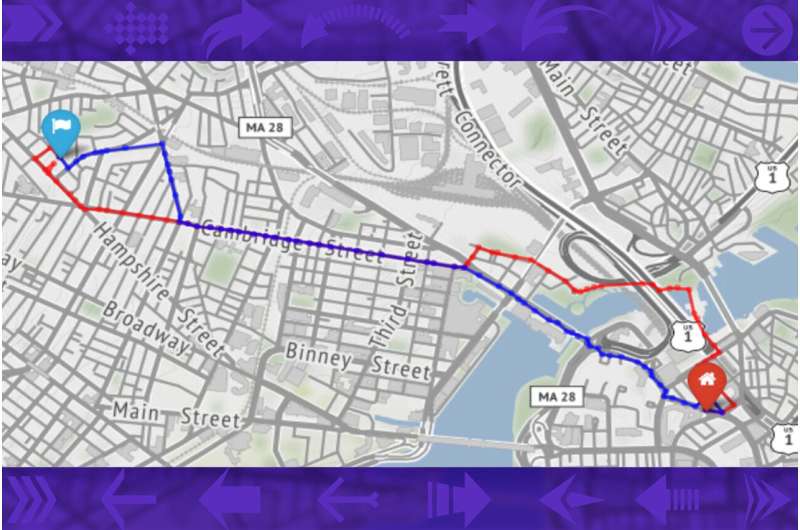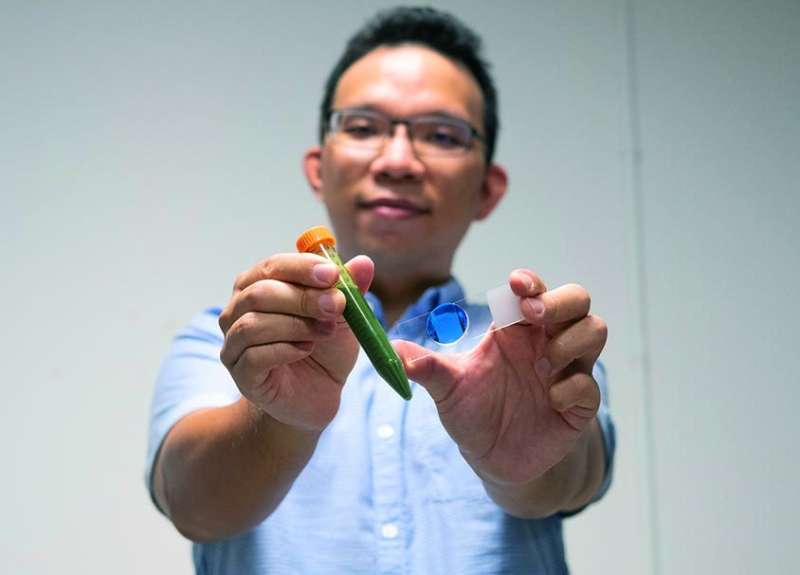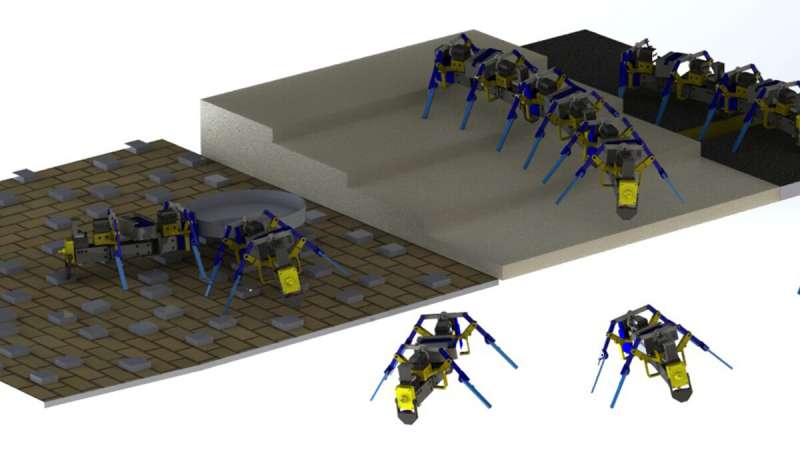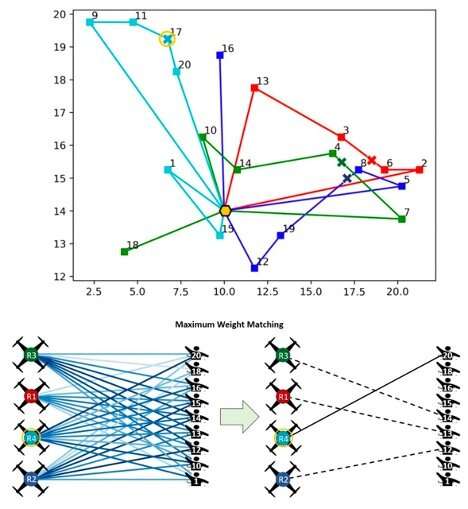Brain activation in sleeping toddlers shows memory for words
Very young children learn words at a tremendous rate. Now researchers at the Center for Mind and Brain at the University of California, Davis, have for the first time seen how specific brain regions activate as two-year-olds remember newly learned words — while the children were sleeping. The work is published Oct. 19 in Current Biology.
“We can now leverage sleep to look at basic mechanisms of learning new words,” said Simona Ghetti, professor at the Center for Mind and Brain and UC Davis Department of Psychology.
At two to three years old, children enter a unique age in memory development, Ghetti said. But young children are challenging to study, and they especially dislike being in a functional MRI scanner.
“The scariest things to small children are darkness and loud noises, and that’s what it’s like during an MRI scan,” Ghetti said.
Ghetti’s team had previously found that if children fell asleep in a scanner while it wasn’t working, they could later start the scan and see brain activation in response to songs the children had heard earlier.
In the new study, they looked at how toddlers retained memories of words.
Graduate student Elliott Johnson and Ghetti created a series of made-up, but realistic sounding words as names for a series of objects and puppets. In the first session, two-year-olds were introduced to two objects and two puppets, then tested on their memory of the names after a few minutes. A week later, they returned and were tested on whether they remembered the names of the objects and puppets. Soon after the second test, they slept overnight in an MRI scanner. The researchers played back the words the children had learned, as well as other words, as they slept.
Activation of the hippocampus in learning
The researchers found activation of the hippocampus and the anterior medial temporal lobe when the sleeping children were played words they had previously learned. This activation correlated with how well they had performed when they initially learned the words a week earlier.
“This suggests that the hippocampus is particularly important for laying down the initial memory for words,” Ghetti said. “This compares quite well with findings from older children and adults, where the hippocampus is associated with learning and with recalling recent memories” Johnson added.
Although young children are rapidly forming memories of new words, they are also losing a lot of memories. When we form a memory, it includes the context: where, when, what else was going on. But if we just learned the name of an object, we don’t need to remember the context to use the word again. That extra detail can go.
It’s not clear how children remember some things, such as names, while losing the rest. Ghetti suspects that overlapping learning experiences interfere with each other and cancel out the unneeded details. Future research will focus on the memory processes that support these changes.
###
Additional authors on the paper are: graduate student Lindsey Mooney, Center for Mind and Brain; Katharine Graf Estes, associate professor at the Center for Mind and Brain and Department of Psychology; and Christine Nordahl, Department of Psychiatry and Behavioral Sciences and MIND Institute. The work was funded by the NIH.
JOURNAL
Current Biology
METHOD OF RESEARCH
Experimental study
SUBJECT OF RESEARCH
People
ARTICLE TITLE
Activation for newly learned words in left medial-temporal lobe during toddlers’ sleep is associated with memory for words
Study: Dogs interpret words, speech
patterns the same way as human infants
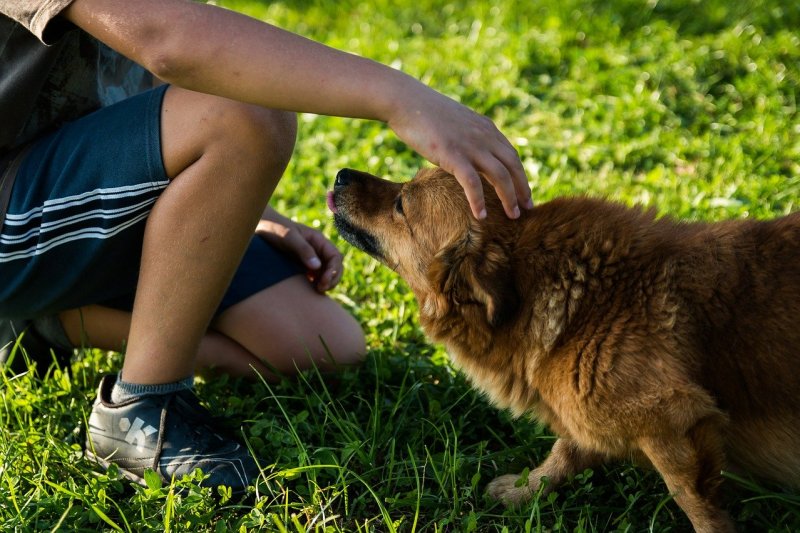
A study suggests that dogs interpret speech patterns the same way humans do. Photo by jarmoluk/Pixabay
Oct. 29 (UPI) -- Dogs interpret words from speech using computations and brain regions similar to human infants, a study published Friday by Current Biology found.
Based on measurements of electrical activity and changes in blood flow in the brain, dogs appear to be able to track words and syllables spoken by humans the same way humans do, the researchers said.
Electroencephalograms, which measure electrical activity in the brain, and functional magnetic resonance imaging, or fMRI, scans, which detect changes in blood flow in the brain, performed on dogs suggests that the animals use similar brain regions to interpret speech.
"We know that in humans both general learning-related and language-related brain regions participate in this process -- and we found the same duality in dogs," study co-author Marianna Boros said in a press release.
RELATED Head shape, breed function play a part in dog-to-human communication
"Both a generalist and a specialist brain region seemed to be involved in statistical learning from speech, but the activation patterns were different in the two," said Boros, a postdoctoral researcher at Eötvös Loránd University in Hungary.
In dogs, the "generalist" brain region -- the basal ganglia -- responded more to a random speech stream, where no specific words could be detected using syllables, than to a structured speech stream in which words were easy to spot just by computing syllables.
Meanwhile, in dogs, the specialist brain region -- the auditory cortex -- responded more to the structured speech stream.
RELATED Dogs process speech hierarchically, just like humans
In humans, the auditory cortex plays a key role in statistical learning from speech, Boros said.
"We believe that this activity increase is the trace word learning leaves on the auditory cortex" in dogs, she said.
A study published in August by Scientific Reports suggested that dogs process speech hierarchically, just like humans, meaning they process intonations first, at lower stages, and word meanings at higher stages.
Similarly, human infants can spot new words in a speech stream before they learn what those words mean, according to the researchers.
To learn new words from continuous speech, infants must not only count how often certain syllables occur together, they need to also calculate how likely it is that these syllables occur together.
To tell where a word ends and another one begins, they make complex calculations to keep track of syllable patterns, in essence learning that syllables that usually appear together are probably words, and those that do not probably are not words.
This is how infants solve the seemingly difficult task of word segmentation -- "they calculate complex statistics about the probability of one syllable following the other," Boros said.
The new findings suggest dogs may also recognize such complex regularities in speech, according to the researchers.
For this study, Boros and her colleagues measured their electrical brain activity using electroencephalogram, or EEG, readings, as well as fMRI scans, which revealed the brain regions responsible for the complex computational capacity in dogs.
The tests were performed on awake, cooperating, unrestrained animals previously trained to lay motionless during the time of the measurements, the researchers said.
The researchers observed differences in dogs' brain waves with frequent versus rare words, as well as brain wave differences for syllables that frequently occur together compared with syllables that only occasionally do.
This indicates dogs keep track not only of simple statistics, or the number of times a word occurs, but also of complex statistics, or the probability that a word's syllables occur together, which has never been seen in other non-human mammals, according to the researchers.
However, how these human-analogue brain mechanisms for word learning emerged in dogs remains unknown, the researchers said.
"Until now we did not know if any other mammal can also use such complex computations to extract words from speech," Boros said.
"Dogs are the earliest domesticated animal species and probably the one we speak most often to, [but] we know very little about the neural processes underlying their word learning capacities," she said.
Oct. 29 (UPI) -- Dogs interpret words from speech using computations and brain regions similar to human infants, a study published Friday by Current Biology found.
Based on measurements of electrical activity and changes in blood flow in the brain, dogs appear to be able to track words and syllables spoken by humans the same way humans do, the researchers said.
Electroencephalograms, which measure electrical activity in the brain, and functional magnetic resonance imaging, or fMRI, scans, which detect changes in blood flow in the brain, performed on dogs suggests that the animals use similar brain regions to interpret speech.
"We know that in humans both general learning-related and language-related brain regions participate in this process -- and we found the same duality in dogs," study co-author Marianna Boros said in a press release.
RELATED Head shape, breed function play a part in dog-to-human communication
"Both a generalist and a specialist brain region seemed to be involved in statistical learning from speech, but the activation patterns were different in the two," said Boros, a postdoctoral researcher at Eötvös Loránd University in Hungary.
In dogs, the "generalist" brain region -- the basal ganglia -- responded more to a random speech stream, where no specific words could be detected using syllables, than to a structured speech stream in which words were easy to spot just by computing syllables.
Meanwhile, in dogs, the specialist brain region -- the auditory cortex -- responded more to the structured speech stream.
RELATED Dogs process speech hierarchically, just like humans
In humans, the auditory cortex plays a key role in statistical learning from speech, Boros said.
"We believe that this activity increase is the trace word learning leaves on the auditory cortex" in dogs, she said.
A study published in August by Scientific Reports suggested that dogs process speech hierarchically, just like humans, meaning they process intonations first, at lower stages, and word meanings at higher stages.
Similarly, human infants can spot new words in a speech stream before they learn what those words mean, according to the researchers.
To learn new words from continuous speech, infants must not only count how often certain syllables occur together, they need to also calculate how likely it is that these syllables occur together.
To tell where a word ends and another one begins, they make complex calculations to keep track of syllable patterns, in essence learning that syllables that usually appear together are probably words, and those that do not probably are not words.
This is how infants solve the seemingly difficult task of word segmentation -- "they calculate complex statistics about the probability of one syllable following the other," Boros said.
The new findings suggest dogs may also recognize such complex regularities in speech, according to the researchers.
For this study, Boros and her colleagues measured their electrical brain activity using electroencephalogram, or EEG, readings, as well as fMRI scans, which revealed the brain regions responsible for the complex computational capacity in dogs.
The tests were performed on awake, cooperating, unrestrained animals previously trained to lay motionless during the time of the measurements, the researchers said.
The researchers observed differences in dogs' brain waves with frequent versus rare words, as well as brain wave differences for syllables that frequently occur together compared with syllables that only occasionally do.
This indicates dogs keep track not only of simple statistics, or the number of times a word occurs, but also of complex statistics, or the probability that a word's syllables occur together, which has never been seen in other non-human mammals, according to the researchers.
However, how these human-analogue brain mechanisms for word learning emerged in dogs remains unknown, the researchers said.
"Until now we did not know if any other mammal can also use such complex computations to extract words from speech," Boros said.
"Dogs are the earliest domesticated animal species and probably the one we speak most often to, [but] we know very little about the neural processes underlying their word learning capacities," she said.
